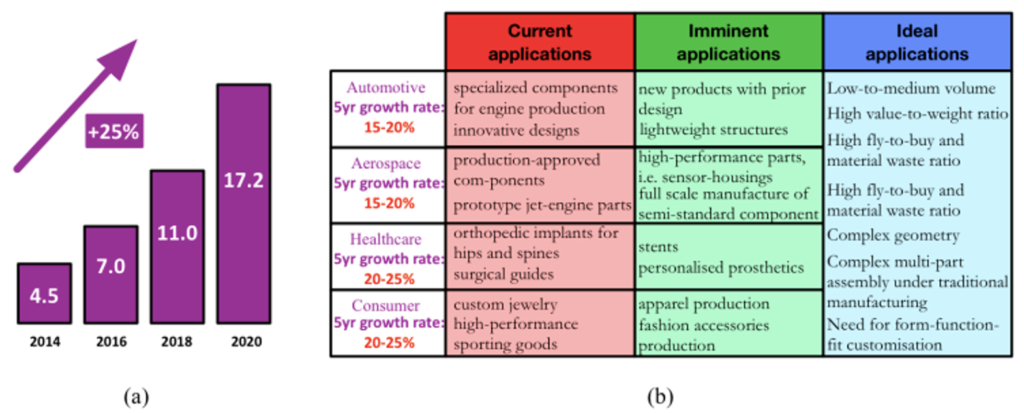3DP_Future – 3D PRINTING: A BRIDGE TO THE FUTURE. Computational methods, innovative applications, experimental validations of new materials and technologies
3D PRINTING: A BRIDGE TO THE FUTURE. Computational methods, innovative applications, experimental validations of new materials and technologies
3DP_Future
Università degli Studi di PAVIA [Project Coordinator]; Università degli Studi di ROMA “La Sapienza” [Partner]; Università degli Studi di NAPOLI Federico II [Partner]; Università degli Studi di ROMA “Tor Vergata” [Partner]; Università degli Studi di CASSINO e del LAZIO MERIDIONALE [Partner]; Politecnico di TORINO [Partner]
€ 399.470,00
€ 1.183.470,00
Ministero dell’Istruzione, dell’Università e della Ricerca (MIUR)
Progetti di Ricerca di Rilevante Interesse Nazionale – PRIN 2017
2019 – 2022 (36 months)
3D printing (3DP) is an innovative manufacturing process that, starting from a virtual model, enables the production of a 3D solid object with a complex shape through an additive process, i.e. through a sequential deposition of material layers (Fig 1a). Nowadays, following the F42 Committee (American Society for Testing and Materials), 3DP can be classified in seven major printing technologies, each one having a different way of processing the input raw material into the final product (Fig 1b).
Due to its technological change of paradigm, 3DP offers several benefits compared to traditional manufacturing [ATKearney Report 2015] such as: mass customization (i.e., ability to create an unlimited spectrum of custom-built designs), improved flexibility (i.e., possibility of mass-producing complex products with flexible fixed-cost capital investments), shorter time-to-market (i.e., shorter design, process, and production cycles), simplified supply chain (i.e., production closer to final user with reduced or even eliminated inventory), reduced waste material (i.e., production of near-net-shape parts with almost no waste material).
Although traditional manufacturing will still be competitive in large-scale production settings in a close future, 3DP role is significantly growing (Fig 2a) in many areas (Fig 2b).
The growing industrial and research interest shown towards 3DP requires the development of new and effective design approaches, adapted and optimized according to the specific printing process. A new challenge is thus associated with the fact that traditional design methods, leveraging on computational mechanics and optimization tools, have not yet been fully tailored to 3DP to effectively support such production processes, especially for the case of really innovative applications.
As an example, a well-known limitation of the current simulation technology is the inaccuracy, or even the inability, of capturing at the macroscopic level residual stresses within the work-piece, induced by the additive production process.
This challenge calls for a new modeling and computational framework which combines different physics and scales to be tackled at the same time. The development of advanced models and tailored numerical tools for 3DP materials and processes represents a substantial and necessary support for the design of cutting-edge innovative applications enabled by additive manufacturing.
Accordingly, the project goal is the development of advanced computational approaches to support the exploration of innovative structural applications based on additive manufacturing technologies. The project aims to achieve such a goal by combining activities along three directions: 1) development of computational methods; 2) design of innovative applications; 3) experimental validations of new materials and technologies.
With respect to computational methods we will develop:
- multi-scale analyses, to properly capture 3DP material behaviors at different scales
- multi-field formulations, to describe multi-physics 3DP phenomena, e.g., phase changes, transport, bond formation
- mechanical models for different classes of 3DP materials (e.g., plastic, metals, concrete, nano-structured materials) and structures (e.g., meta-material structures and smart structures)
- optimization tools, to take advantage of variable local structures (e.g., infills and lattices) and to make it possible to directly generate printer-compatible g-codes for the optimized structures
With respect to innovative applications we will design:
- lightweight components for space applications, based on high strength Al alloys specifically designed for 3DP technologies
- optimized spatially-graded self-deployable/self-folding structures for space structure packaging, minimally-invasive surgery devices, soft robotics, energy harvesting
- innovative highly-tunable meta-structures with local nonlinear resonators for vibration damping
- electrospun high-strength nanocomposite wire ropes
- ceramic-like high-performance materials, through the design of ad-hoc thermal treatments, including polymer degradation and sintering
- foams with a highly-controllable porous-interconnected internal structure
- concrete beams, partitioned into single optimized 3DP segments, to be assembled with externally installed rebar reinforcements
With respect to (materials and technologies) experimental validations we will produce and test:
- innovative high strength Al alloys
- lightweight component for space applications
- metamaterial beams and plates optimized for structural control
- freeform concrete beams
We will also carry out an experimental campaign to approach the definition of standards for 3DP materials and to support the development and validation of computational models and prototypes.

Fig. 1. (a) What is 3D printing? From a 3D virtual representation to the 3DP object; (b) 3D printing classification from ASTM F42 Committee.

Fig. 2. (a) Global 3D printing industry market for hardware, supplies, and services ($ billion); (b) current, imminent, and ideal applications of 3D printing for automotive.

